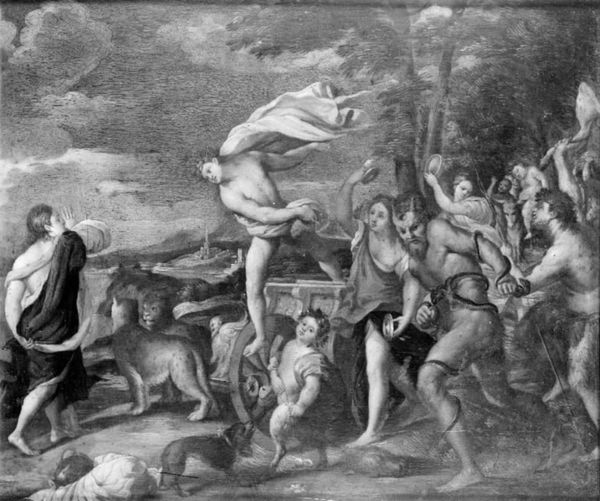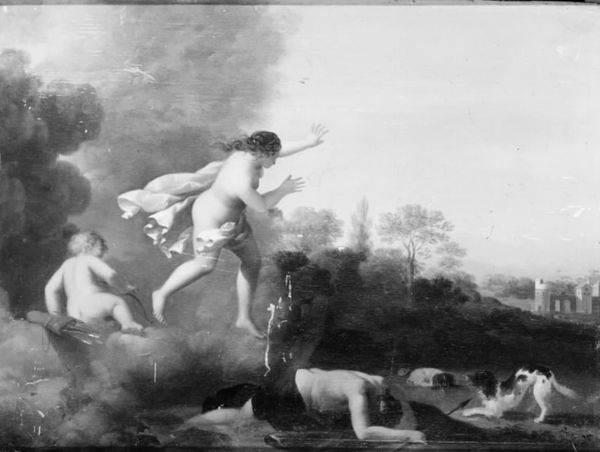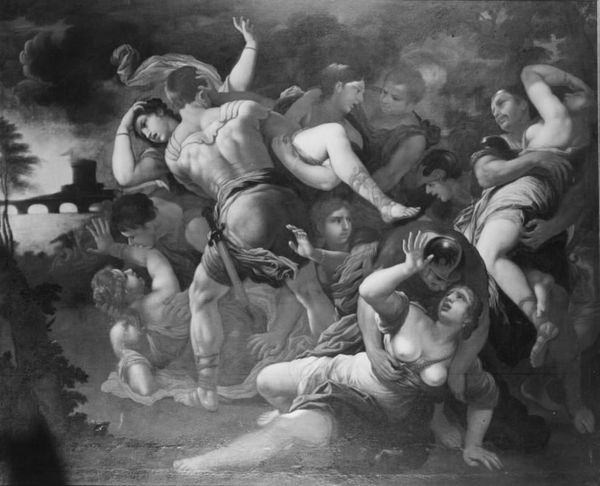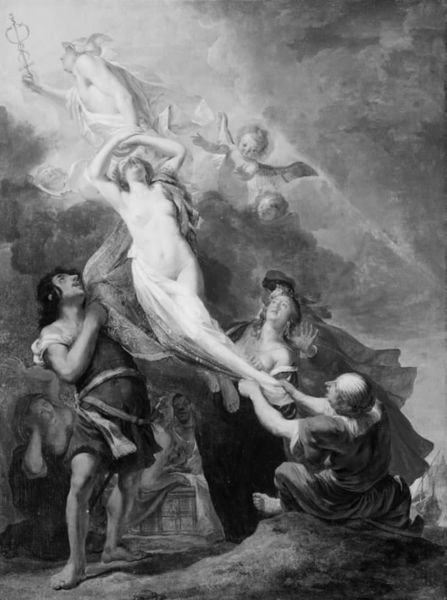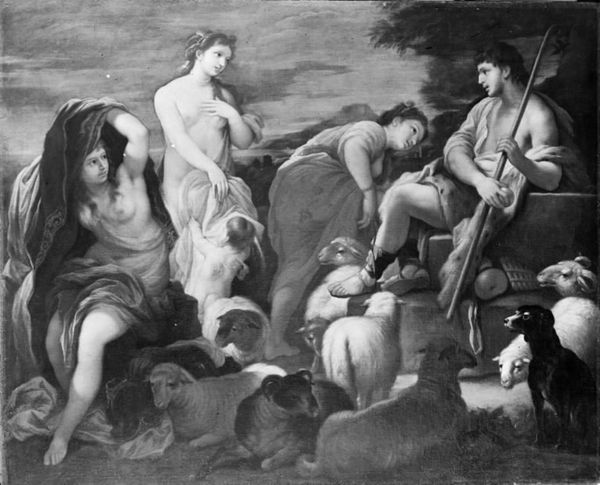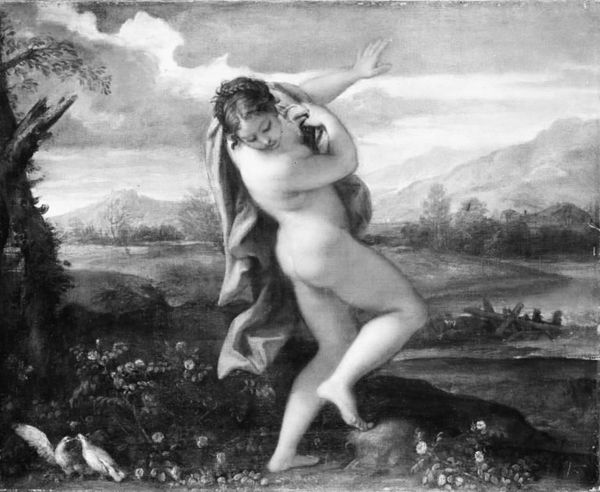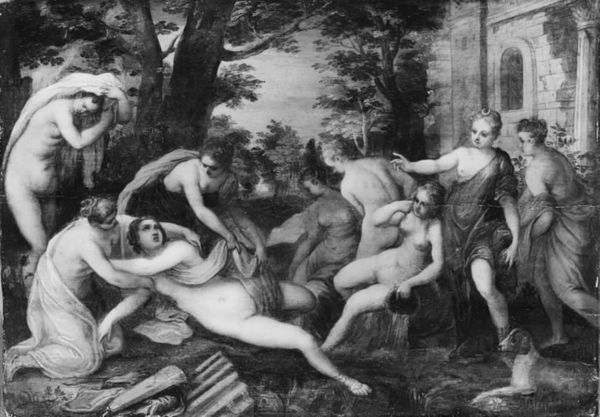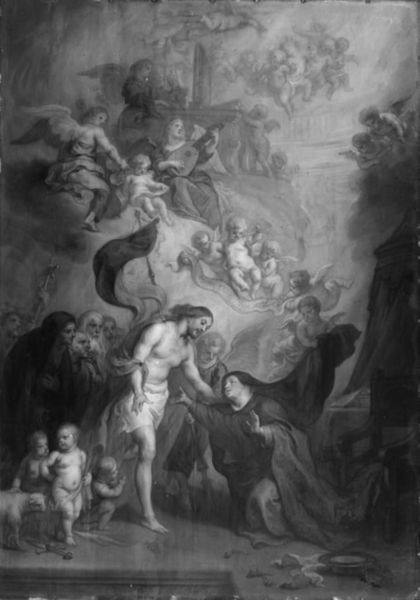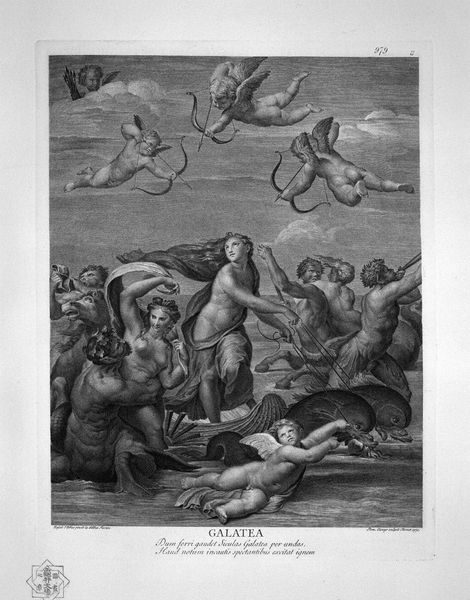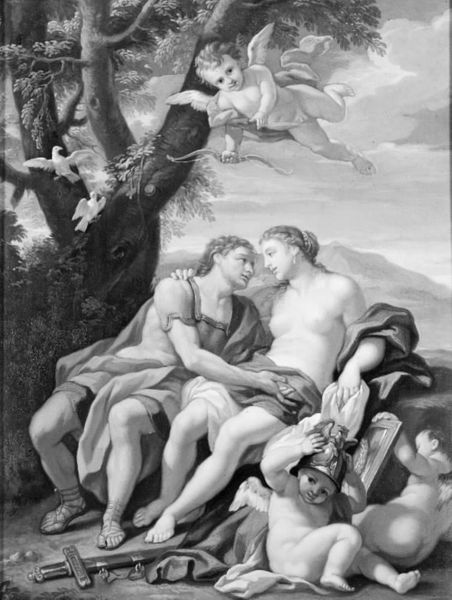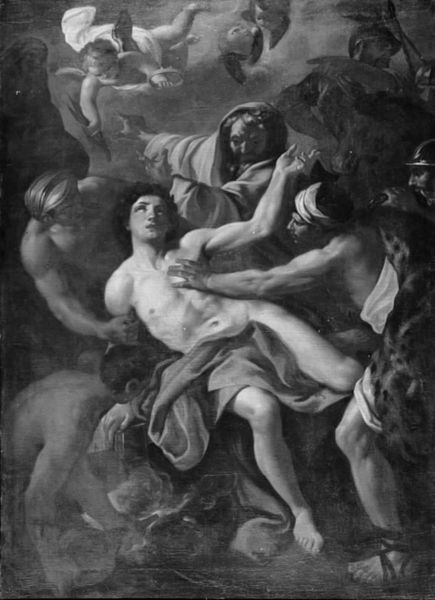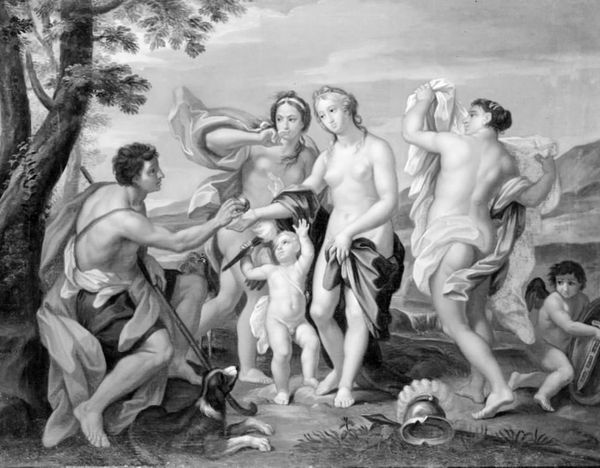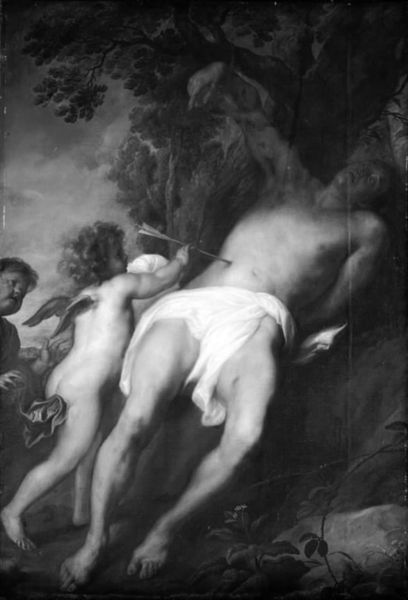
oil-paint
#
allegory
#
baroque
#
oil-paint
#
landscape
#
classical-realism
#
figuration
#
genre-painting
#
history-painting
#
nude
Dimensions: 30.5 cm (height) x 40.5 cm (width) (Netto)
Editor: This is Cornelis van Poelenburch’s "A Gathering of Gods," painted sometime between 1609 and 1667. It’s currently at the Statens Museum for Kunst. The oil paint gives it such a soft, almost dreamlike quality. What stands out to you in terms of symbolic language? Curator: The clouds themselves become quite significant, don’t they? Clouds historically represent a threshold, a liminal space between the mortal and the divine. Poelenburch uses them to stage the divine figures, but what about the groupings themselves? Do you recognize any familiar iconographic clusters? Editor: I see some figures that look like putti. And others... perhaps referencing well-known myths or legends? Curator: Exactly. Note the figure with the thyrsus, traditionally associated with Bacchus, and the nymphs attending to what appears to be the ritual of anointing or crowning. Their nudity is significant; it references their inherent innocence, their connection to a more natural, pre-social state of being. Then look to the periphery, that council gathered around Jupiter, the clear patriarch figure presiding over some debate or decision. What does the positioning suggest about power? Editor: So, the cloud setting and groupings establish not just a divine sphere, but also specific relationships and hierarchies. Is Poelenburch commenting on these relationships through composition and imagery? Curator: Precisely. And the visual continuity creates its own commentary on authority, duty, and ecstasy, revealing the subtle cultural expectations about gods in the baroque imagination. Editor: I hadn’t considered the cloud setting as a symbolic element in itself before, nor how classical images could function as a record of shifting social values and philosophical structures. Curator: And that constant shifting offers insight into our ongoing connection to, and reconstruction of, the past.
Comments
No comments
Be the first to comment and join the conversation on the ultimate creative platform.
